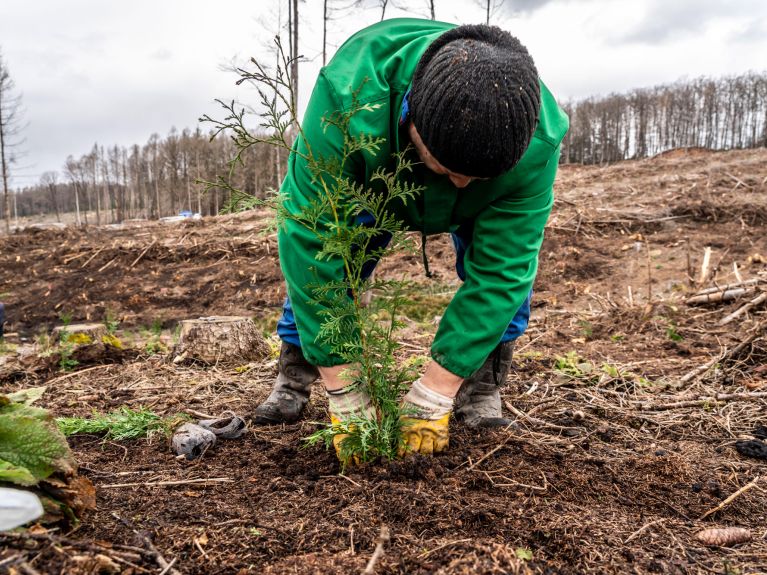Adapting to climate change
Germany too is facing major challenges from global warming – find out here what the government is doing about it

The climate is changing throughout the world. This climate change is fundamentally affecting the living conditions of all human beings. “The ecosystem, we humans, and our infrastructures, such as water supplies, healthcare or our cities, are all tailored to the prevailing climate here,” says Dirk Messner, President of the Federal Environment Agency (UBA). He says that admittedly “Germany’s climatic conditions enable us to prepare for a temperature rise somewhat more easily than many other regions. Consequently, we should provide support to them. After all, we are living in a networked world,” Messner says to the online magazine Klimareporter. But one problem still remains: “Our ecosystems can’t adapt at the same pace.”
Dieses YouTube-Video kann in einem neuen Tab abgespielt werden
YouTube öffnenThird party content
We use YouTube to embed content that may collect data about your activity. Please review the details and accept the service to see this content.
Open consent formClimate policy in Germany is being built on two pillars. The first is designed to combat climate change itself by avoiding greenhouse gasses and creating a sustainable economy. The second focuses on adapting to the temperature increases which are no longer avoidable.
This is why the German government passed an adaptation strategy in 2008:
Overarching measures
- Specialist advice for municipalities
- Forecast and calculation of the anticipated damage as a result of climate change
Improving co-operation
- Better networking and exchange of experience among the municipalities
- Promoting innovative projects
- The service and Climate Preparedness Portal KLiVO

Extreme weather: Drought, heat, torrential rain
- Promotion of cooling greenery in cities, development and protection of fresh-air corridors
- Water strategy that prioritizes its use as drinking water, service water, agriculture etc.
- The Forest Climate Fund finances the conservation of forests and moorlands
- Forests owned by the federal authorities are being made climate-robust through reforestation
Flooding, high water
- Rewilding rivers and flood plains to prevent and manage flooding
- Improving rainwater management in built-up areas
- Improving high-water protection along rivers and coasts
Risk group safety measures
- Supporting social facilities in the adaptation processes
- Further education for social workers, home carers and healthcare personnel
- Implementing monitoring systems for healthcare and environment
The aim of the measures is to identify and react appropriately in preparation for the risks to the population, the natural habitats and the economy. “In the case of a severe climate change, we will need to restructure all of this in the coming decades in order to prepare ourselves for radically different weather conditions,” says the UBA’s Dirk Messner.
You would like to receive regular information about Germany? Subscribe here:



